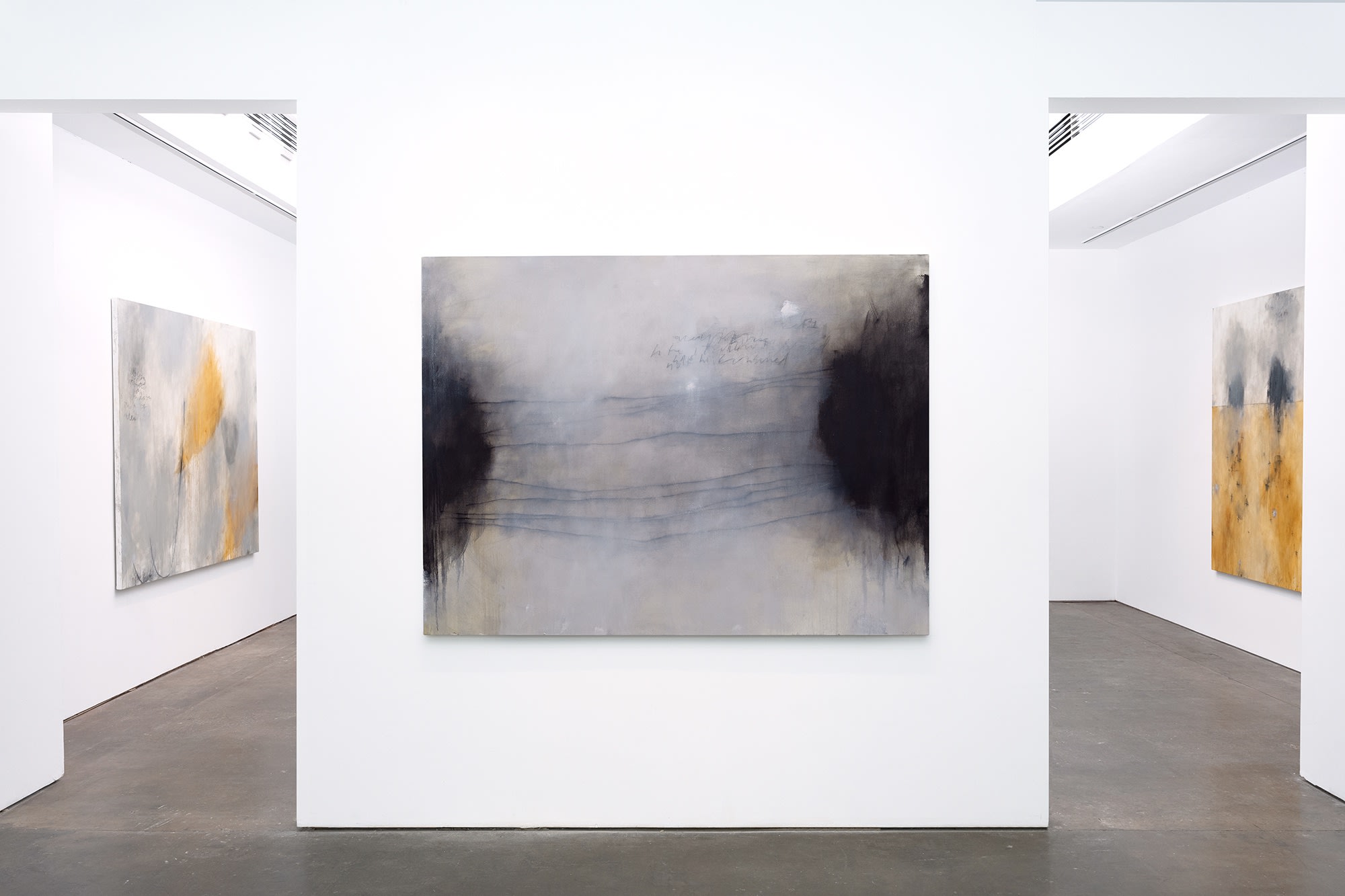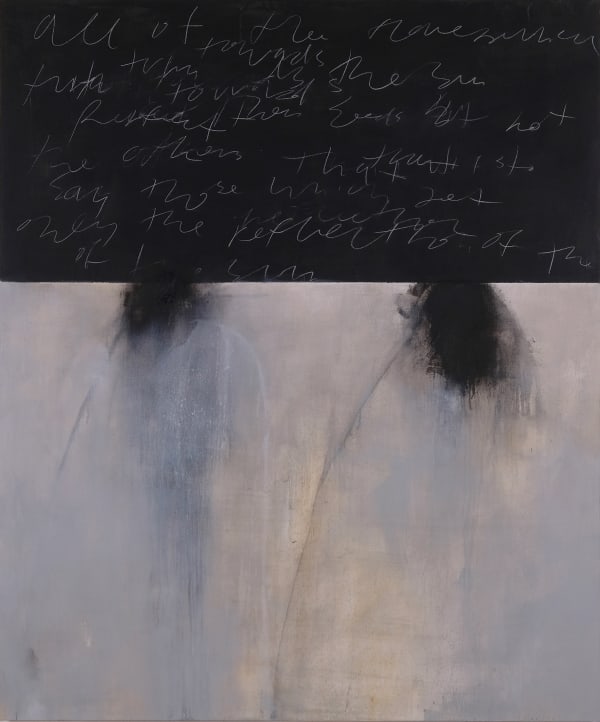-
Reliquary
Steven Seinberg
-
Johnson Lowe Gallery is pleased to present Reliquary, a solo exhibition of new works by Steven Seinberg. On view from December 6, 2024, through January 25, 2025, this exhibition marks Seinberg’s first presentation with Johnson Lowe Gallery and the 17th solo exhibition in the gallery’s 34-year history.
Our second presentation of this series features new works of Steven Seinberg. In his latest series, Seinberg delves into the familiar territory of the division of space in his canvases, a recurring motif throughout his three-decade-long career. Through this exploration, he contemplates the dualistic nature inherent in existence — the interplay between light and darkness, known and unknown, seen and unseen. Seinberg's fascination with this division extends beyond mere physical boundaries, evolving into a profound examination of the metaphysical realms it represents. As he navigates these conceptual territories, he uncovers a myriad of possibilities, each offering unique insights into the nature of reality and human consciousness.
-
-
Absence is a weight we carry, even when we do not recognize its presence. It is the breath we feel in a room emptied of its sound, the tension of an unspoken word, the silent imprint of something sacred, fragile, and profoundly human. There are moments in the presence of Steven Seinberg’s work when the very room itself seems to hold its breath. His paintings, drawings, and now his first-ever sculptures and installations possess a gravitational pull that resists the noise of the outside world, urging a quiet, deliberate contemplation. They are not about filling space but giving form to what remains—the unseen, the unspoken, the unresolved.
-
The formal prowess of Seinberg’s practice finds its roots in a lineage of abstractionist that includes Mark Rothko, Cy Twombly, and Clyfford Still, artists whose work transcended aesthetic concerns to delve into the depths of human emotion and spiritual inquiry. Rothko once spoke of his paintings as facilitating a “religious experience,” and this idea of art as a pathway to transcendence is what I have come to discover is a foundational touchstone of Seinberg’s ethos. But where Rothko’s color fields reach for the sublime in their vastness, Seinberg’s work actualizes that sublimity through their embrace of an uncanny equilibrium, one that reasserts the essential dualities foundational to existence itself.
-
A turning point in Seinberg’s practice emerged in 2022 with the exhibition, The Third Book on Light and Shade. Inspired by Leonardo da Vinci’s exploration of illumination and obscurity, Seinberg produced a series of starkly bifurcated canvases that captured the thresholds between light and shadow. These works introduced a profound engagement with duality—not as oppositional forces but as interdependent phenomena that define perception itself. In many ways, this body of work marked the construction of a world parallel to his earlier paintings—a universe informed by the shadows cast by his visual lexicon.
Within The Third Book on Light and Shade, Seinberg developed a series of drawings what he refers to as “book pages”—a series of intimate drawings that distill the principles of light and shadow into concentrated, reverential studies. These works, layered with graphite, charcoal, and subtle washes of pigment, reflect da Vinci’s influence while establishing an unmistakable connection to Seinberg’s own conceptual inquiries. The drawings capture a sense of precision and depth that feels ancient yet immediate, as though each line carries the weight of centuries of philosophical reflection.
-

-
Seinberg’s practice evolved into this latest series, Reliquary (2023–2024), a body of work created between 2023 and 2024, which extends and deepens these explorations, transforming the stark contrasts of his “light and shade” canvases into something more intricate, more resonant. Where The Third Book on Light and Shade charted the terrain of light and shade as elemental phenomena, Reliquary inhabits the spaces between—moments where presence and absence, materiality and impermanence, converge into a singular, charged equilibrium. Vessel-like forms began to emerge in his drawings, most notably in works on paper like Collected, Not Found (2024), where fine graphite lines and subtle tonal gradations create shapes that evoke the idea of holding—light, memory, and the intangible. These forms, which were introduced in the drawings, became central to the larger paintings, reinforcing the idea that Seinberg’s drawings serve as the conceptual and formal foundation of his broader practice. He describes these drawings as akin to haikus, distilling complex ideas into concise, evocative gestures.
-
In the larger paintings, such as Reliquary, Seinberg constructs compositions that feel both expansive and intimate. This seventy-by-one-hundred-twenty-inch canvas balances contrasting panels: the left, a layered expanse of bruised mauve, smoky lilac, and ash-gray, hums with quiet dynamism, while the right, a plane of matte black, holds its weight in a singular, sinuous line that arcs across its surface. The tension between these panels is not oppositional but symbiotic, each reinforcing the presence of the other. The painting itself becomes a vessel—a reliquary for what cannot be spoken but only felt.
-
-
During his time in Portugal, Seinberg encountered medieval and Renaissance reliquaries—ornate vessels designed to hold fragments of saints and bridge the physical and divine. These objects deeply influenced his work, providing both a conceptual and formal framework for Reliquary. The idea of a reliquary as both a container and a conduit resonate throughout the series, not only in the sculptures but also in the paintings and drawings, where vessel-like forms take on new, symbolic meaning. These works, like the reliquaries that inspired them, function as thresholds—spaces where the material and the ineffable converge.
For the first time in his three-decade-long career, Steven Seinberg has introduced sculpture into his practice, a development that both complements and expands his language. These objects, some found and transformed by the artist’s hand like Reliquary X and Reliquary I, are composed of reclaimed wood from furniture belonging to his grandparents’ Brooklyn home, infusing them with personal history and memory. The use of these fragments—teeming with the presence of a life lived—creates a sense of intimacy that anchors the sculptures in the same spirit as the reliquaries the artist discovered throughout his travels and echo the containment and transformation that pervade his drawings and paintings. They are at once protectors of what is contained and objects of contemplation themselves, evoking a tension between fragility and permanence, absence and presence.
-
Seinberg’s engagement with spirituality has always been embedded in his practice, though its expressions have evolved. While nondualism offers one lens through which his work can be interpreted, it is but one entry point into a broader language that traverses the material and metaphysical. His works, informed by traditions that span cultures and ages, reflect a deep awareness of the universal truths that bind us.
Through these works, Seinberg offers us a moment of reflection, a space to consider not only the forces that shape his art but the forces that shape our own lives. His paintings, drawings, sculptures, and installations do not demand understanding; they invite feeling. They ask us to linger in the spaces between, to see the connections we might otherwise miss, to feel the weight of what lingers. In this, Seinberg reminds us that art, at its best, is not an object but an experience—a luminous encounter with the universal truths that govern us all.
-
In my observations of Seinberg’s practice—particularly the developments that define this series—I found myself reflecting on how, as we age and gain wisdom, we often find ourselves reflecting on our lives with a profundity that allows us to become acutely aware and objectively conscious of truths we could intuit but not yet fully articulate. This is where Reliquary resides—in that space of deepened understanding, where the interdependent forces of existence are not only observed but honored, and where balance becomes not just a principle but a practice. These are phenomenological encounters, works that stand still with the weight of what is both there and not, revealing that the spaces between are where meaning takes root.
- Donovan Johnson, Director
-

Steven Seinberg: Reliquary
Past viewing_room









